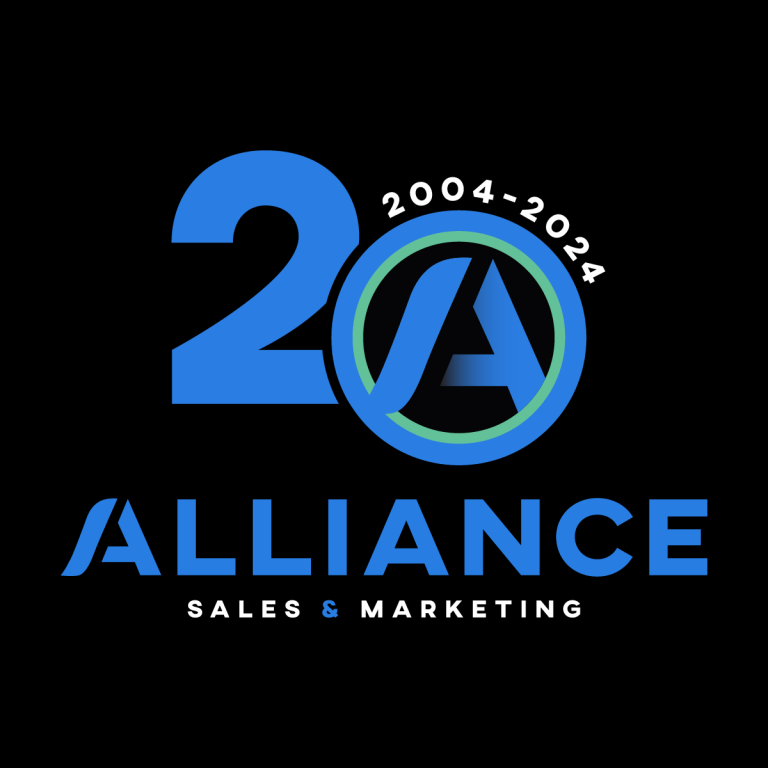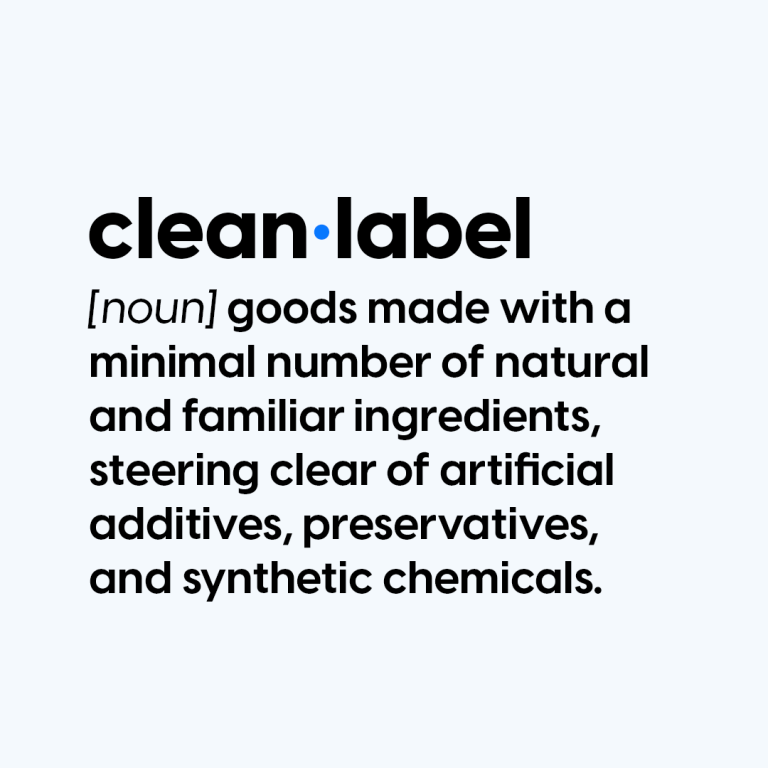
One of the most successful ways to grow your brand is getting your product sold at major retailers.
The following is an excerpt from a webinar presented by Alliance Sales and Marketing and Social Nature. Topics in this article include:
- Creating a winning sales presentation
- The power of capturing consumer insights
- What to include in your buyer meeting
A special thanks to Kirsten Barner, Sr. Director of Marketing & Future Forward at Alliance, and Jessica Malach, VP Marketing & Insights at Social Nature for sharing their knowledge on the CPG industry.
A look into the retail landscape
Contrary to popular belief, market research shows many consumers are still heading in-stores to shop for groceries despite strong gains in online shopping, driven by COVID-19. Both shopping in-store and online has increased by 50% compared to previous years.
We can think about it from a retail buyer’s perspective. As you walk through a retail store, you will notice limited shelf space. Because a retailer’s goal is to increase sales, they are very selective when accepting items. They will think about which products are more likely to meet the wants and needs of their customers. Before a product hits the shelves, retail buyers need to be confident that it will sell.
Here are the three steps for how to create a winning retailer sales presentation.
Step 1: Developing your pitch
Data-Driven
Validating your product with data ensures that customers will continue to purchase your product. If you are just getting started and aren’t yet working with a broker leveraging insights like AISLE+, we have three low-cost methods for gathering customer input to validate your product:
Online Surveys
It’s critical to conduct consumer research. For initial concept testing, you can utilize free and low-cost tools like Google Forms, Survey Monkey, or Typeform. Surveying shoppers in your local area can help you gather information on what makes a product stand out.
Creating relationships at local events
Building local relationships with consumers in the community can help get your brand name out there. You can even include a QR code on a receipt to collect data by having customers submit a review or comment.
D2C E-Commerce Sales
Metrics from online merchants like Shopify and Amazon can provide insight into best- performing products and high recurrent purchase rates. Using e-commerce platforms can also help with pricing, messaging, and validating your products. Consider incentivizing shoppers with a discount code to build sales data support your retail expansion efforts.
Retailer’s go-to-market (GTM) strategy and target audience
Each retailer has its own target audience, business objectives, and goals. Understanding your retailer’s go-to-market strategy, such as product innovation, product requirements, pricing strategy, and promotion strategy can give you a deeper understanding about the retailer and their processes.
Here are some tips to better understand a retailer’s target audience and GTM strategy:
Look at category insights
By analyzing category information, you can determine if there are any voids in the market your product can satisfy. Identify underperforming SKUs and innovation trends in the CPG market to determine opportunities for growth. To gain an even better understanding, you can partner with a food broker. Food brokers can assist in brand growth and can analyze down to the SKU level.
Understand local data
Using demographics and psychographics of your local region can help you understand what matters to shoppers in the market. Identifying dietary preferences or lifestyle habits can exhibit the consumer’s needs.
Highlight market trends
Identify patterns that demonstrate your brand’s relevance. What qualities do your products have that make them appealing to buyers? Some trends include sustainable packaging, functional ingredients, or minority-owned brands.
Conduct a store visit
What value can your product bring to the retailer’s offering? Walk around the aisles at your retailer. The store walk will give you a sense of your category environment. You can better understand product assortment and assesses competitors on-shelf.
Visiting the retailer’s e-commerce website can also give you a sense of their promotional strategies and pricing. Look into any trade initiatives they may have, such as couponing or loyalty programs.
What drives the buyer’s decision?
Bonuses for retail buyers are often linked to category performance
Category incrementality is increasingly important to buyers. It’s important to think about how your product brings value to consumers and in turn to the retailer.
Margin requirements
Address best pricing by understanding your product’s margins and slotting fees. The retail environment revolves around moving a large number of products with tight profit margins. As a result, retailers are discriminating the products they stock. It’s important that selling your product makes financial sense to the retailer.
Increase retailer sales
While preparing for your pitch meeting, think about the future of your product. Describe how quickly your company and brand is expanding, how your items can increase category sales, and bring new consumers to the retailer.
Meet consumer demand
Make use of the information you’ve gathered to demonstrate how your product is in demand in their direct sales area. Retailers want to know that once you’re on the shelf, you’ll be able to sell units right away.
Maintain inventory
Having enough inventory and on-time delivery is important, especially in your first few weeks on-shelf. Going out of stock puts your brand and relationship with the retailer at significant risk.
Kirsten’s Tips: Assess which retailers have goals and values aligning with your brand and products. For example, Wegmans embraces innovation and trends compared to other retailers who may take longer to adopt buzzworthy products.
Retailer shopper marketing programs
Throughout this journey, you are forming a partnership with a retailer. Investing in the retailer’s shopper marketing programs can help create a successful product launch.
Creating a calendar that shows any promotions you’ll have throughout the year will help show your commitment to success with a retailer. Lay out how you will generate consumer demand. Using digital marketing strategies like paid social ads or influencers, or even in-person pop-up events will help drive attention to the retailer and your product.
It’s important to maintain an open mind. Understand anything can shift along the process. Approvals, disapprovals, or new opportunities are expected when entering a new business venture.
Alliance Sales & Marketing specializes in Shopper Marketing. Driving end-to-end growth solutions, Alliance offers full-service strategy, planning, management, creative, design, optimization, and reporting to reach your brand goals sustainably.
Sources and materials
An additional way to enhance your retailer presentation is by sending or bringing samples in of your product. We’ve created a checklist of what you’ll need prior to the presentation:
- Send your samples. Plan how and when the buyer will receive your product on time. Plan accordingly if items need to be refrigerated or frozen.
- Ship package flats to help tell your story.
- Showcase purchase displays. Buyers can envision displays in their stores much easier if you mockup displays, add images, or stage.
- Send your presentation early. Sending your presentation 24 hours in advance ensures the buyer will receive your presentation on time.
- Make duplicates of Powerpoint presentations. By leaving a printed copy, the buyer can reference selling points or any material in the future.
Step 2: Building your retail presentation
You may only have 15 minutes to present to the retail buyer. Make your presentation brief and succinct to be respectful of the buyer’s time. Before putting together your presentation, check with the retailer to see if they prefer a specific format.
We have created an example template for you to follow:
Slide 1: Cover page – you can get creative on the style
Slide 2: Your brand’s story
Slide 3: Overview of the product with main selling points
Slide 4: Describe how your product differs from others in the market
Slide 5: Data – include competitive comparison chart
Slide 6: Share your target audience’s demographics and how they align with the retailer’s market
Slide 7: Your data-driven argument for why they should carry your product
Slide 8: Display data by category
Slide 9: Shopper marketing calendar – show your shopper marketing plans throughout the year
Slide 10: Recommendations – prioritize top seller SKUs, fill category voids, achieve the retailer’s objectives
Make sure your sales deck is interesting to the audience. Make use of bullet points, use pictures, and demonstrate your enthusiasm for your product.
Step 3: The follow-up
Ask about next steps
During the meeting, inquire about the timeline and expectations. This helps to keep the sales meeting momentum going and prepare you for future meetings.
Send a follow up email within 24 hours
Last but not least, thank the buyer or brand manager for taking the time to meet. You can go over what you talked about and set a deadline for when you’ll follow up.
Set reminders
Add due dates and reminders to your calendar to make sure you don’t miss any deadlines.
You’re ready!
Securing shelf space in retail is a significant win as your brand grows across the country. We hope that this insight to winning at a retailer’s presentation inspires you to bring confidence to your encounter.
Alliance Sales & Marketing successfully grows brands nationwide by a data-driven approach, extensive experience, and relationship with retailers. Contact us today to learn more on how we can help tell your brand’s unique story.








